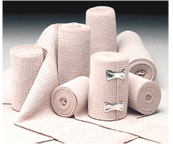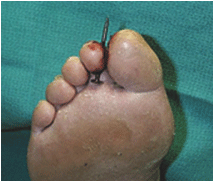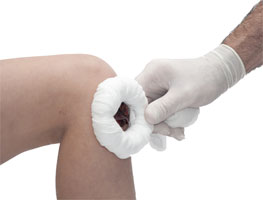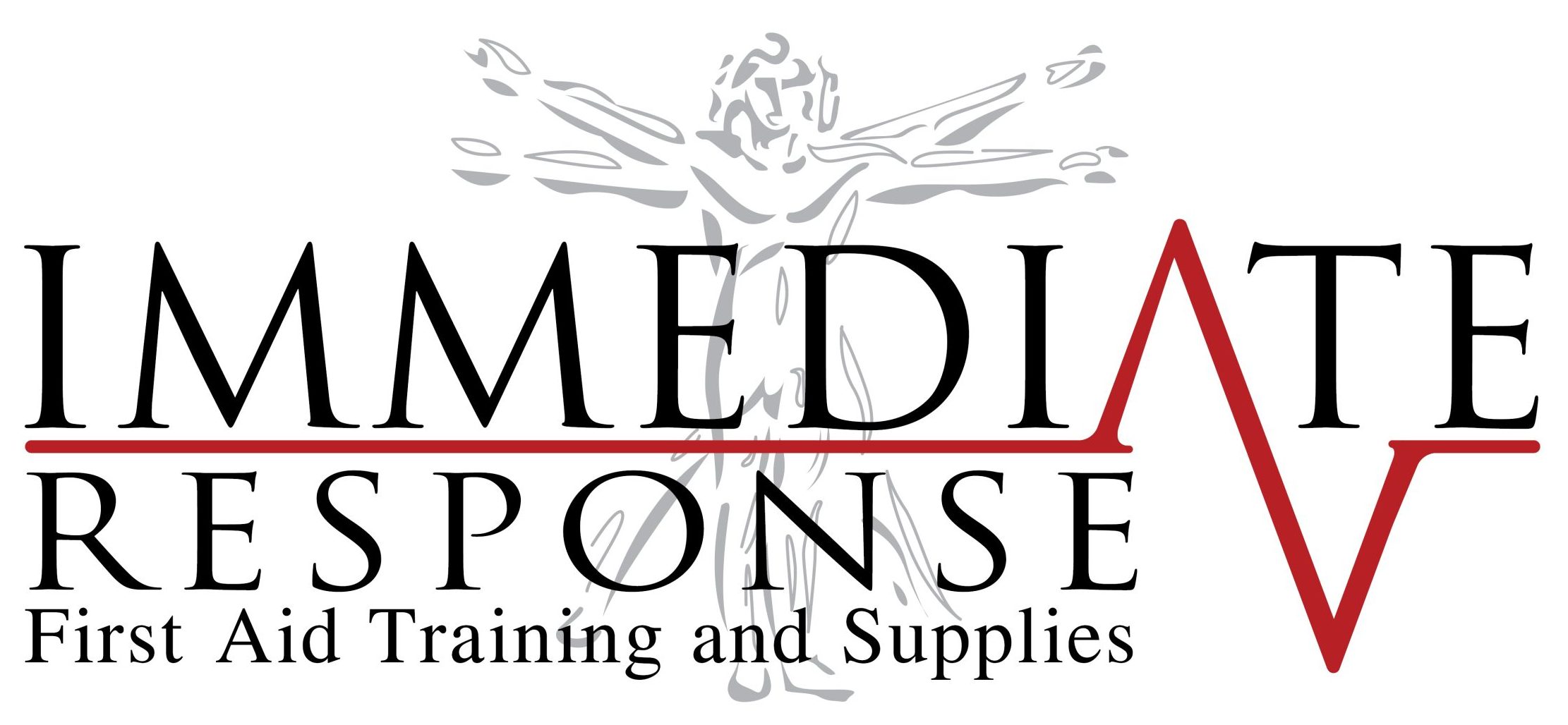Bleeding
Average Total Blood Volumes
Infant: zero – 1-year-old —10 kg: Blood volume 800 mL; a little more than two cans of drink.
Child: 1 – 8 years old—20 kg: Blood volume 1,600 mL; 4.5 cans of drink.
Adult: 5 to 6 litres of blood; it makes up 7 to 8 per cent of a person’s total body weight.
Approximately 2.75 to 3 litres of blood is plasma with the remainder being the cellular portion.
The full volume of blood is transported around the body approximately once every minute.

External Bleeding
External bleeding occurs when there is an open wound or breaks in the skin. The amount of bleeding depends on the type and depth of the wound and varies depending on the blood vessels that have been injured.
There are three types of bleeds; arterial, venous and capillary.
 Arterial- An arterial bleed is bright red in colour and spurting with the beat of the heart.
Arterial- An arterial bleed is bright red in colour and spurting with the beat of the heart.
 Venous – A venous bleed is dark red in colour and appears to ooze from the body in a constant flow.
Venous – A venous bleed is dark red in colour and appears to ooze from the body in a constant flow.
 Capillary – Capillary bleed occurs from a surface wound e.g. a graze, and bleeding may include a fluid (plasma) mixed with blood and appears to seep from the wound.
Capillary – Capillary bleed occurs from a surface wound e.g. a graze, and bleeding may include a fluid (plasma) mixed with blood and appears to seep from the wound.

Direct Pressure Method
 Follow the DRSABCD emergency action plan.
Follow the DRSABCD emergency action plan.
 Use standard precautions to protect yourself from coming into contact with blood and fluids by using gloves, face shield and eye protection if available.
Use standard precautions to protect yourself from coming into contact with blood and fluids by using gloves, face shield and eye protection if available.
 Attempt to stop the bleeding by applying sustained direct or indirect pressure on or near the wound.
Attempt to stop the bleeding by applying sustained direct or indirect pressure on or near the wound.
 Call 000 for an ambulance.
Call 000 for an ambulance.
 Elevate the bleeding part above the level of the heart if possible (unless fractured), restrict movement and immobilise the limb.
Elevate the bleeding part above the level of the heart if possible (unless fractured), restrict movement and immobilise the limb.
Apply a clean pad to the wound, squeezing the edges of the wound together, maintaining pressure at all times.

 Apply a firm bandage over the pad.
Apply a firm bandage over the pad.
 If bleeding does not stop, DO NOT remove the pad and bandage. Place a second pad over the first pad and re-bandage firmly.
If bleeding does not stop, DO NOT remove the pad and bandage. Place a second pad over the first pad and re-bandage firmly.
 If severe bleeding continues it may be necessary to remove the pad to ensure that a specific point has not been missed. Then re-apply a clean pad and bandage.
If severe bleeding continues it may be necessary to remove the pad to ensure that a specific point has not been missed. Then re-apply a clean pad and bandage.
 If there is an embedded object DO NOT remove it because it may be plugging the wound and restricting bleeding.
If there is an embedded object DO NOT remove it because it may be plugging the wound and restricting bleeding.
 Place padding around or above and below the object and apply pressure over the pads.
Place padding around or above and below the object and apply pressure over the pads.
 If possible make the casualty comfortable by sitting or lying down if bleeding is severe.
If possible make the casualty comfortable by sitting or lying down if bleeding is severe.
 Regularly check circulation below the wound.
Regularly check circulation below the wound.
 Reassure the casualty.
Reassure the casualty.
 Monitor the casualty’s vital signs; airway, breathing and circulation.
Monitor the casualty’s vital signs; airway, breathing and circulation.
 Treat for shock if necessary.
Treat for shock if necessary.

 DO NOT remove the first pad as this may remove any clotting blood and increase bleeding.
DO NOT remove the first pad as this may remove any clotting blood and increase bleeding.
 DO NOT remove foreign materials that are embedded in the wound as this may increase bleeding and cause further injury to the casualty.
DO NOT remove foreign materials that are embedded in the wound as this may increase bleeding and cause further injury to the casualty.
 DO NOT bandage the wound too tightly as this may cut off the circulation.
DO NOT bandage the wound too tightly as this may cut off the circulation.
 DO NOT apply pressure over or on a protruding object, apply pressure by padding around the object.
DO NOT apply pressure over or on a protruding object, apply pressure by padding around the object.
Act Quickly!
The casualty can only lose approximately 20% of their blood volume before they lapse into unconsciousness. When direct pressure method fails use:
Tourniquet Bandaging Technique
-ONLY if bleeding continues do you use the tourniquet bandaging technique to control life-threatening bleeding.
 Apply pressure to pressure points for 10 minutes or until bleeding stops. Pressure points are located inside elbow or groin.
Apply pressure to pressure points for 10 minutes or until bleeding stops. Pressure points are located inside elbow or groin.
 If bleeding is still uncontrolled – apply a constrictive (tourniquet) bandage (at least 5 centimeters wide) and bandage above the wound.
If bleeding is still uncontrolled – apply a constrictive (tourniquet) bandage (at least 5 centimeters wide) and bandage above the wound.
 DO NOT apply a tourniquet over a joint or wound.
DO NOT apply a tourniquet over a joint or wound.
 Note the time of application of constrictive bandage – this can be written on the casualty.
Note the time of application of constrictive bandage – this can be written on the casualty.
 After 30 minutes release bandage and check.
After 30 minutes release bandage and check.
 Ensure bandage is visible, DO NOT cover up the tourniquet with a bandage or clothing.
Ensure bandage is visible, DO NOT cover up the tourniquet with a bandage or clothing.
 Inform medical personnel of the location and time of application.
Inform medical personnel of the location and time of application.
Dressings
Place dressing directly over the wound.
The function of the dressing is to:
 Absorb blood and other fluids.
Absorb blood and other fluids.
 Keep the wound clean.
Keep the wound clean.
 Protect the wound from infection.
Protect the wound from infection.
 Reduce pain.
Reduce pain.
Laceration
A laceration is a jagged-tear in the skin often with a loss of tissue which results from an injury e.g. barbed wire. A laceration may be minor or severe. Most minor lacerations have minimal bleeding, minimal pain and no numbness or tingling at the site. If you can see any bones or tendons or there is excessive bleeding and pain, seek medical attention immediately.
Puncture/Penetrating
A puncture wound is an injury caused by a pointed object that pierces or penetrates the skin. A puncture injury can cause substantial internal bleeding, especially where the wound has caused serious damage to the surrounding tissue, bone, internal organs, arteries and veins. Puncture wounds are commonly caused by knives, screwdrivers, gunshots and other penetrating or sharp objects.
 Follow the DRSABCD emergency action plan.
Follow the DRSABCD emergency action plan.
 Call 000 for an ambulance.
Call 000 for an ambulance.
 Clean the area with saline or warm soapy water.
Clean the area with saline or warm soapy water.
Use a Ring Bandage to apply indirect pressure.
 Elevate the bleeding part, unless fractured.
Elevate the bleeding part, unless fractured.
 Restrict movement.
Restrict movement.
 Immobilise the part.
Immobilise the part.
 If possible make the casualty comfortable by sitting or lying down.
If possible make the casualty comfortable by sitting or lying down.
 Regularly check circulation below the wound.
Regularly check circulation below the wound.
 Reassure the casualty.
Reassure the casualty.
 Monitor the casualty’s vital signs; airway, breathing and circulation.
Monitor the casualty’s vital signs; airway, breathing and circulation.
 Treat for shock if necessary.
Treat for shock if necessary.



Amputation
Amputation is the removal of an extremity (for example, an arm, leg, hand, finger, toe) either surgically, as a result of infection, diabetes, vascular disease, cancer or other diseases. Or through trauma, such as an accident. This is a serious injury. Normally there is a large loss of blood due to the severing of arteries.
Amputated Part
 Apply direct pressure method bleeding management to the wound as discussed above.
Apply direct pressure method bleeding management to the wound as discussed above.
 DO NOT wash or soak the amputated part in water or any other liquid.
DO NOT wash or soak the amputated part in water or any other liquid.
 Place amputated part in a sealed plastic bag.
Place amputated part in a sealed plastic bag.
 Place the sealed bag in cold water with ice if possible.
Place the sealed bag in cold water with ice if possible.
 The amputated part should be transported to hospital by ambulance with the casualty.
The amputated part should be transported to hospital by ambulance with the casualty.
The amputated part should not come in contact with ice or water.
Ice may burn the delicate tissue and both ice and water increase the risk of infection.
Internal Bleeding
Internal bleeding is bleeding inside the body that is not seen from the outside. Internal bleeding occurs when damage to an artery or vein allows blood to escape the circulatory system and collect inside the body. Internal bleeding may occur within tissues, organs, or in cavities of the body including the head, chest, and abdomen.
Internal bleeding may not be evident for many hours after it begins, with symptoms only occurring when there is significant blood loss or if a blood clot is large enough to compress an organ and prevent it from functioning properly.
Internal injuries can be caused by either a blunt force (driver into steering wheel) or penetrating (stabbing) injury. The signs and symptoms can vary depending on the organs and blood vessels that are involved.
 History of the incident.
History of the incident.
 ‘Guarding ‘ of the abdomen, laying down in fetal position.
‘Guarding ‘ of the abdomen, laying down in fetal position.
 Rapid, weak pulse.
Rapid, weak pulse.
 Rapid, shallow breathing.
Rapid, shallow breathing.
 Altered level of consciousness.
Altered level of consciousness.
 Nausea and/or vomiting.
Nausea and/or vomiting.
 Pain, tenderness or tension over or around the affected area.
Pain, tenderness or tension over or around the affected area.
 Pale, cool, clammy skin.
Pale, cool, clammy skin.
 Thirst.
Thirst.
 Restlessness.
Restlessness.
 Visible swelling.
Visible swelling.
 Anxiousness.
Anxiousness.
 Signs and symptoms of shock.
Signs and symptoms of shock.
Note: a first aider cannot control internal bleeding
 Follow the DRABCD emergency action plan.
Follow the DRABCD emergency action plan.
 Call 000 for an ambulance – Call First and Call Fast.
Call 000 for an ambulance – Call First and Call Fast.
 Assist the casualty into a position of comfort.
Assist the casualty into a position of comfort.
 Loosen any tight clothing.
Loosen any tight clothing.
 Cover the casualty with a blanket to maintain body warmth.
Cover the casualty with a blanket to maintain body warmth.
 If there is an obvious wound or injury treat accordingly.
If there is an obvious wound or injury treat accordingly.
 Reassure the casualty.
Reassure the casualty.
 Monitor the casualty’s vital signs; airway, breathing, circulation.
Monitor the casualty’s vital signs; airway, breathing, circulation.
 DO NOT give any medications.
DO NOT give any medications.
 DO NOT allow the casualty to eat or drink.
DO NOT allow the casualty to eat or drink.
 If the casualty becomes unconscious but is breathing normally roll them onto their side into the recovery position and continue to observe.
If the casualty becomes unconscious but is breathing normally roll them onto their side into the recovery position and continue to observe.
 If the casualty stops breathing commence CPR.
If the casualty stops breathing commence CPR.


